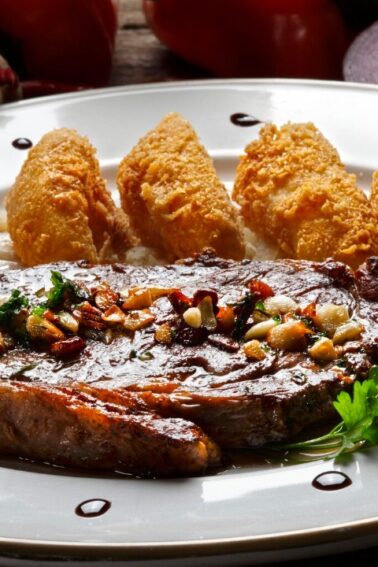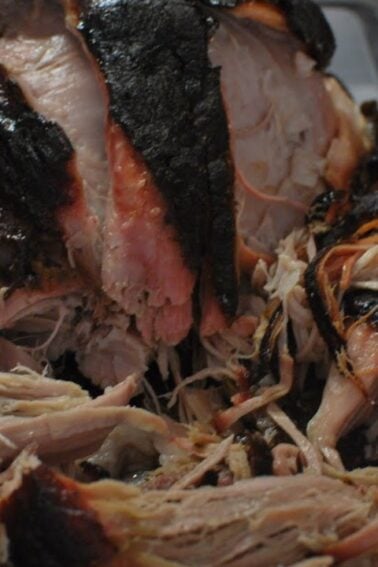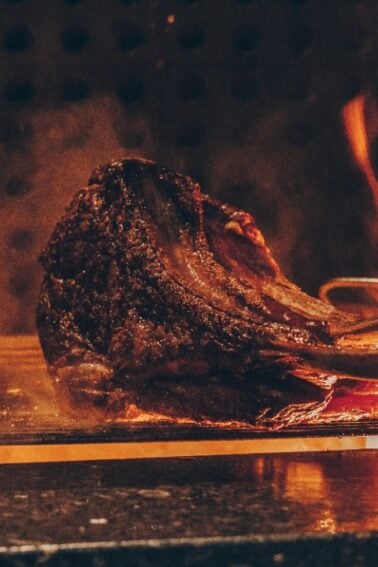Allowing a steak to rest after cooking is a crucial step in achieving maximum juiciness. Whether you’re a seasoned chef or a home cook, mastering the art of resting steak can elevate your culinary skills. Here are seven effective methods to ensure your steak remains succulent and flavorful.
1. Allowing the Steak to Reach Room Temperature

Resting your steak begins even before it hits the pan or grill – ish. Allowing the meat to reach room temperature ensures even cooking, results in a juicier steak. Removing the steak from the refrigerator about 30-60 minutes before cooking will help achieve this. This method helps avoid the common issue of an overcooked exterior and an undercooked interior and allows the steak to cook more evenly.
By starting at room temperature, the steak cooks more uniformly, allowing the juices to distribute evenly throughout the meat. For a detailed guide on preparing steak, check out this comprehensive resource.
2. Using a Cooling Rack

Using a cooling rack is an excellent way to rest steak. Place the steak on a wire rack set over a baking sheet. This setup allows air to circulate around the steak, preventing it from steaming and losing its crisp exterior. The cooling rack method is particularly useful for thicker cuts of meat. It ensures that the heat dissipates evenly, preventing the bottom of the steak from becoming soggy.
This technique is often used in professional kitchens to maintain the quality of the steak during the resting period.
3. Tent with Foil

Tenting the steak with foil is a classic technique that retains heat while allowing the steak to rest. Simply cover the steak loosely with aluminum foil to keep it warm without trapping steam that could make it soggy.
This method also helps prevent the steak from cooling down too quickly, which can be particularly important if you’re cooking outdoors or in a drafty kitchen. However, avoid sealing the foil tightly, as this can cause the steak to overcook from retained heat.
4. Resting on a Warm Plate

Resting your steak on a warm plate can keep it at an optimal temperature without overcooking. Preheat a plate by placing it in a warm oven or by running it under hot water, then pat it dry before placing your steak on it. This method is especially beneficial for thinner cuts of steak, which can cool down rapidly.
The warm plate acts as a gentle heat source, maintaining the steak’s temperature while allowing the juices to redistribute. Learn more about this technique here.
5. The Salt Rest Technique

The salt rest technique involves lightly salting the steak before resting it. Salt draws out some moisture, creating a minimal brine that reabsorbs into the meat, enhancing its flavor. This method not only adds flavor but also helps retain moisture.
Be cautious not to over-salt, as excessive salt can draw out too much moisture and make the steak dry. The salt rest technique is a simple yet effective way to improve the juiciness of your steak.
6. Time-Based Resting

Timing is crucial when resting a steak. A general rule of thumb is to rest the steak for about 5 minutes per inch of thickness. This allows the juices to redistribute evenly throughout the meat. For larger cuts, such as a ribeye, resting for up to 10 minutes is recommended.
A study on meat resting times suggests that appropriate resting significantly impacts the tenderness and juiciness of the steak.
7. Monitoring Internal Temperature with a Meat Thermometer

Using a meat thermometer to monitor the internal temperature during the resting period can prevent overcooking. The internal temperature of the steak will rise slightly even after it’s removed from the heat source. By checking the temperature, you can ensure that the steak remains within your desired doneness range.
This method is particularly beneficial for achieving perfect medium-rare or medium steaks. For more insights into meat temperature management, refer to this research article.
Hungry for more? Subscribe to our newsletter and become part of the world’s best meat community! From grilling tips to smoky secrets, we send you the best recipes, guides, and expert advice to master every cut.













